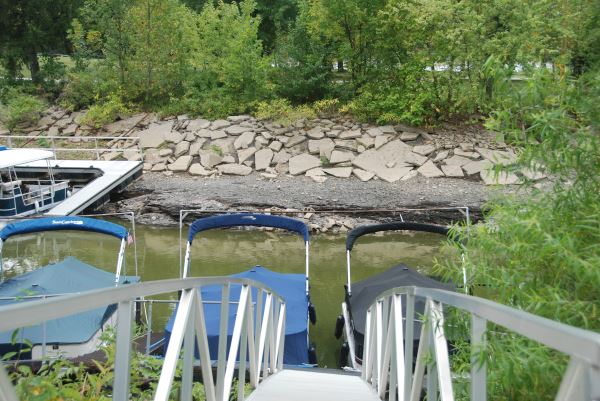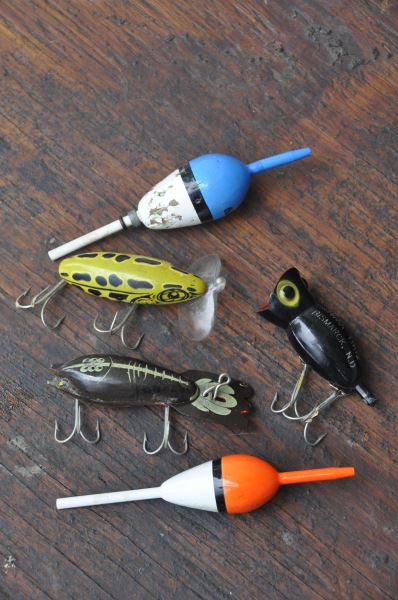
We do a lot of scouting this time of year on our local lake, when late-summer water levels are often at their lowest. We may get out and fish early in the day, but once the sun is well overhead and some of our favorite gamefish species get a little hard to come by, we pay forward a bit and start seeking spots to fish in the future when water levels are higher.
.jpg_600.jpg)
I’ll pack binoculars, a camera, a lake chart and a hand-help GPS unit and have son Ethan at the helm, directing the FloteBote along the shoreline. The teenager will watch the side- and down-scanning screen of GPS-enabled Humminbird mounted atop the helm, creating waypoints as he sees promising subsurface structure and marking the spots on the paper chart for cross-referencing. Meanwhile, I’m scoping the low-water mark along the shore with the binocular or bare eyes, depending on the circumstances, looking for the same.
When I spy the thick crown of a fallen tree, an old road bed, the foundation from an old building, a pile of rocks, a stump field or any other structure that is normally covered with water, I investigate. If it looks like it might attract fish when water levels are at normal pool and fish are concentrated around such cover, I’ll photograph it and include in the frame any landmarks that are above the high water mark to help me locate the position when levels are back up and the structure itself is no longer visible. I’ll use the hand-held GPS to get a fix on the location as well, and mark it on the paper chart as a further reference, including the coordinates.
.jpg_600.jpg)
And it’s not only classic ‘structure’ points that we are seeking. We also note flats or gravel beds that are exposed by the low water, areas that will be used by fish for spawning next spring and honey holes for us early in the season.
The next time we want to go fishing and levels are back up to normal, or at least higher than when we scouted and noted the exposed cover, we just head for those spots. We can use the paper chart, the GPS and our photos to find exactly where the underwater structure is and start fishing it.
We started using the camera for marking spots even before our boat left the dock. A few autumns ago our lake was at record low levels, thanks to an over-aggressive draw down by the lake managers and a record dry fall. The lake dropped so low so fast that by the weekend we were able to get to our docked pontoon boat, but it and the docks were barely afloat. We actually had to remove the furniture from the deck to get enough weight off the pontoons to float the boat, which we paddled and poled to the nearby channel to find water deep enough to use the outboard and get to the ramp and be pulled out for the season.

Before we did, however, we noticed several pockets of structure that were exposed in the cove that held our docks. From a sunken oak tree and a gravel flat, to a drain pipe outlet and a pile of cement blocks, some resourceful angler had stacked at a previous low water episode to provide his own private reef. We took reference photos and made notes about these fish-attracting features and their locations. The next spring we found we could catch crappies at times when few others were getting any action at all—and doing so right in the small boat basin we shared with fellow boat club members by fishing over the hidden structure we had located and marked for just such use the previous September.
The next fall we expanded the low-water scouting and structure-marking effort to include the central main basin of our 3,500-acre home lake, and have more than a hundred waypoints to choose from when water levels are at normal pool and we need to catch dinner or are out with friends and want them to hook-up to some fish. What’s more, if the lake allowed ice fishing, we could use the same waypoints to locate private places to augur holes and wet a line during the winter months. Alas, as a water supply reservoir, the levels at our local lake fluctuate to such a degree that ice fishing is not allowed—or recommended.
If your local lake suffers from varying water levels, and you want to make the most of it and locate some of your own prime, private fishing spots, this may be the time of year to get out there and scout ‘em up.